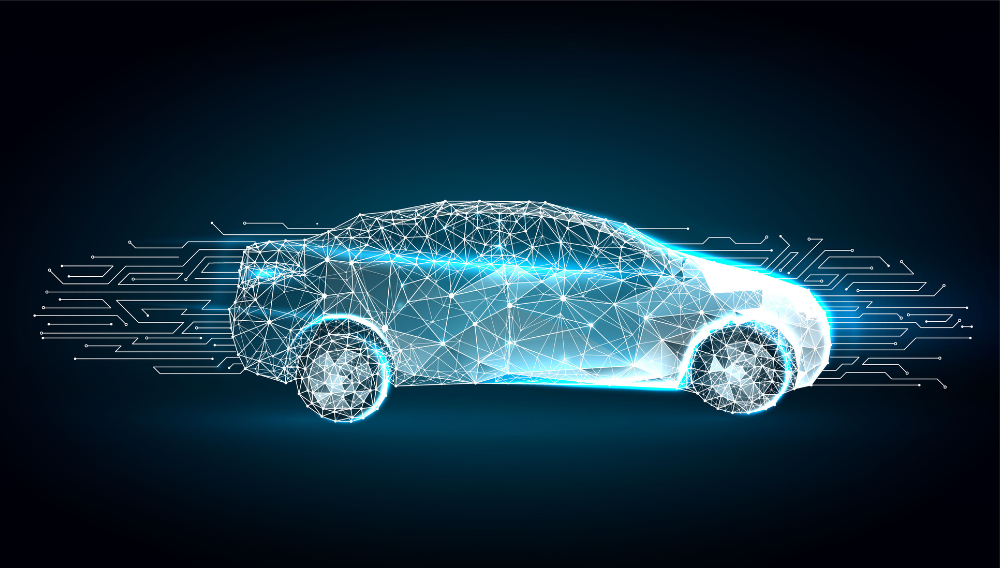
In today's interconnected world, the demand for real-time data communication is rising across such industries as automotive, healthcare, industrial automation, and more. To meet this demand, combining standard technologies such as Data Distribution Service (DDS™) with Time-Sensitive Networking (TSN) presents a powerful solution that offers numerous benefits for automotive manufacturers.
DDS is a real-time publish-subscribe middleware standard that is designed for real-time and scalable data distribution. It ensures timely delivery of data with high reliability, scalability, and interoperability. TSN is a set of standards developed to provide deterministic real-time communication over Ethernet networks. The combination gives developers the best of both worlds.
Figure 1: DDS and TSN network layers in the communications stack.
Source: Industry IoT Consortium
Let’s take a deeper look at this technology pairing within the automotive industry. The integration of DDS with TSN holds immense potential, especially in the context of implementing Zonal architecture. Zonal architecture in vehicles involves dividing the vehicle into different zones, each containing specific electronic control units (ECUs) responsible for various functions, such as powertrain, chassis control, and advanced driver assistance systems (ADAS). This is where the capabilities of DDS and TSN complement each other to improve communication throughout the vehicle.
Here are the top 5 ways that DDS and TSN can revolutionize Zonal architecture in next-generation vehicles:
- Deterministic Communication: Safety-critical data, such as sensor data from ADAS components or control signals for the powertrain, requires deterministic communication to ensure timely processing and response. TSN ensures that such data packets are transmitted with bounded latency and low jitter, enabling real-time performance. Meanwhile, DDS provides Quality of Service (QoS) controls to ensure that data goes to the right place at the right time, every time.
- Scalability and Flexibility: As the complexity of automotive systems continues to increase, the ability for scalability and flexibility become crucial factors. DDS provides a scalable communication framework capable of handling large-scale data distribution across distributed systems. TSN complements this by offering standardized mechanisms for deterministic communication over Ethernet networks, ensuring seamless integration with DDS across various zones and ECUs.
- Enhanced Reliability: In automotive applications, data reliability is critical to ensure the safety and integrity of vehicle operations. The combination of DDS and TSN enhances reliability by providing fault-tolerant communication and redundant paths for critical data transmission. This ensures that even in the event of network failures or disruptions, essential information can still be exchanged reliably among different zones and ECUs.
- Real-Time Data Fusion: Zonal architecture involves the fusion of data from multiple sensors and ECUs distributed across different zones. DDS facilitates real-time data sharing throughout the vehicle by providing a standardized data model and an efficient publish-subscribe communication paradigm. TSN ensures that the fused data is delivered with deterministic timing, enabling accurate perception and decision-making algorithms in ADAS and autonomous driving systems.
- Simplified Vehicle Wiring: By adopting Zonal architecture coupled with DDS and TSN, automakers can significantly reduce the wiring complexity within the vehicle. Ethernet-based TSN networks allow for the consolidation of communication channels, eliminating the need for separate wiring harnesses for each ECU, while DDS helps minimize the amount of data that has to be distributed. This not only reduces weight and cost, but also simplifies maintenance and troubleshooting procedures.
In summary, the integration of DDS with TSN presents a compelling solution for implementing Zonal architecture in modern vehicles. By leveraging the strengths of both technologies, automakers can achieve deterministic communication, scalability, reliability, real-time data fusion, and reduced wiring complexity, thereby paving the way for the software-defined vehicles (SDVs) of tomorrow.
Want to learn more about our implementation of DDS for automotive? Check out RTI Connext Drive. You can also get practical tips on the benefits of combining DDS and TSN in a recent RTI capability brief.
About the author:
 Tobias Fieger is the Global Business Development Manager of Automotive at RTI, where he establishes relationships with customers and partners for RTI’s fast-growing global automotive business and for RTI Connext Drive. He has more than 12 years of sales and business development experience, working extensively with global automotive and industrial industries. Tobias holds a MSc in Electrical Engineering and Information Technology from the Karlsruhe Institute of Technology KIT.
Tobias Fieger is the Global Business Development Manager of Automotive at RTI, where he establishes relationships with customers and partners for RTI’s fast-growing global automotive business and for RTI Connext Drive. He has more than 12 years of sales and business development experience, working extensively with global automotive and industrial industries. Tobias holds a MSc in Electrical Engineering and Information Technology from the Karlsruhe Institute of Technology KIT.
Posts by Tag
- Developers/Engineer (177)
- Connext DDS Suite (77)
- Technology (74)
- News & Events (73)
- 2020 (54)
- Standards & Consortia (51)
- Aerospace & Defense (48)
- Automotive (35)
- 2023 (34)
- 2022 (29)
- IIoT (27)
- Leadership (24)
- 2024 (22)
- Cybersecurity (20)
- Healthcare (20)
- 2021 (19)
- Connectivity Technology (15)
- Military Avionics (15)
- Culture & Careers (14)
- FACE (13)
- Connext DDS Pro (10)
- JADC2 (10)
- ROS 2 (10)
- 2025 (7)
- Connext DDS Tools (7)
- Connext DDS Micro (6)
- Databus (6)
- Transportation (5)
- Case + Code (4)
- Connext DDS (4)
- Connext DDS Cert (4)
- Energy Systems (4)
- FACE Technical Standard (4)
- Oil & Gas (3)
- RTI Labs (3)
- Research (3)
- Robotics (3)
- #A&D (2)
- Connext Conference (2)
- Edge Computing (2)
- MDO (2)
- MS&T (2)
- TSN (2)
- ABMS (1)
- C4ISR (1)
- ISO 26262 (1)
- L3Harris (1)
- LabView (1)
- MathWorks (1)
- National Instruments (1)
- Simulation (1)
- Tech Talks (1)
- UAM (1)
- Videos (1)
- eVTOL (1)
 Success-Plan Services
Success-Plan Services Tobias Fieger
Tobias Fieger